Away from Olympics, sewage blights vast swaths of Rio

Rivulets of waste crisscross the labyrinth of alleyways that serve as 5-year-old Kaike de Oliveira Benjamin's playground, forming dark, fetid puddles and gurgling streams of refuse and trash. It's little better inside the tiny, one-room apartment he shares with his mother, two little brothers and infestations of roaches and rats. When it rains, the basement apartment floods ankle-deep with a mixture of rainwater and sewage, and drinking water often comes out of the tap looking and smelling contaminated.
Rio de Janeiro's lack of basic sanitation is in the headlines because Olympic athletes will compete in polluted waters during next year's games, but it's hardly news in areas like the Rocinha slum, where contact with untreated waste is an everyday reality for the Benjamins and tens of thousands of other families.
The consequences are not fleeting. They reverberate for decades, dooming many children exposed to this filth to lives stunted by illness.
One public health expert calls the sewage system in Rio largely "medieval," comparable with London or Paris in the 14th or 15th century.
And it's not just Rio. Fewer than half of households nationwide are hooked up to sewage mains, meaning that much of the waste generated by about 100 million people runs through open-air ditches that bisect neighborhoods like Kaike's across this continent-sized nation, befouling streams and rivers that in turn contaminate lakes and lagoons, beaches and bays.

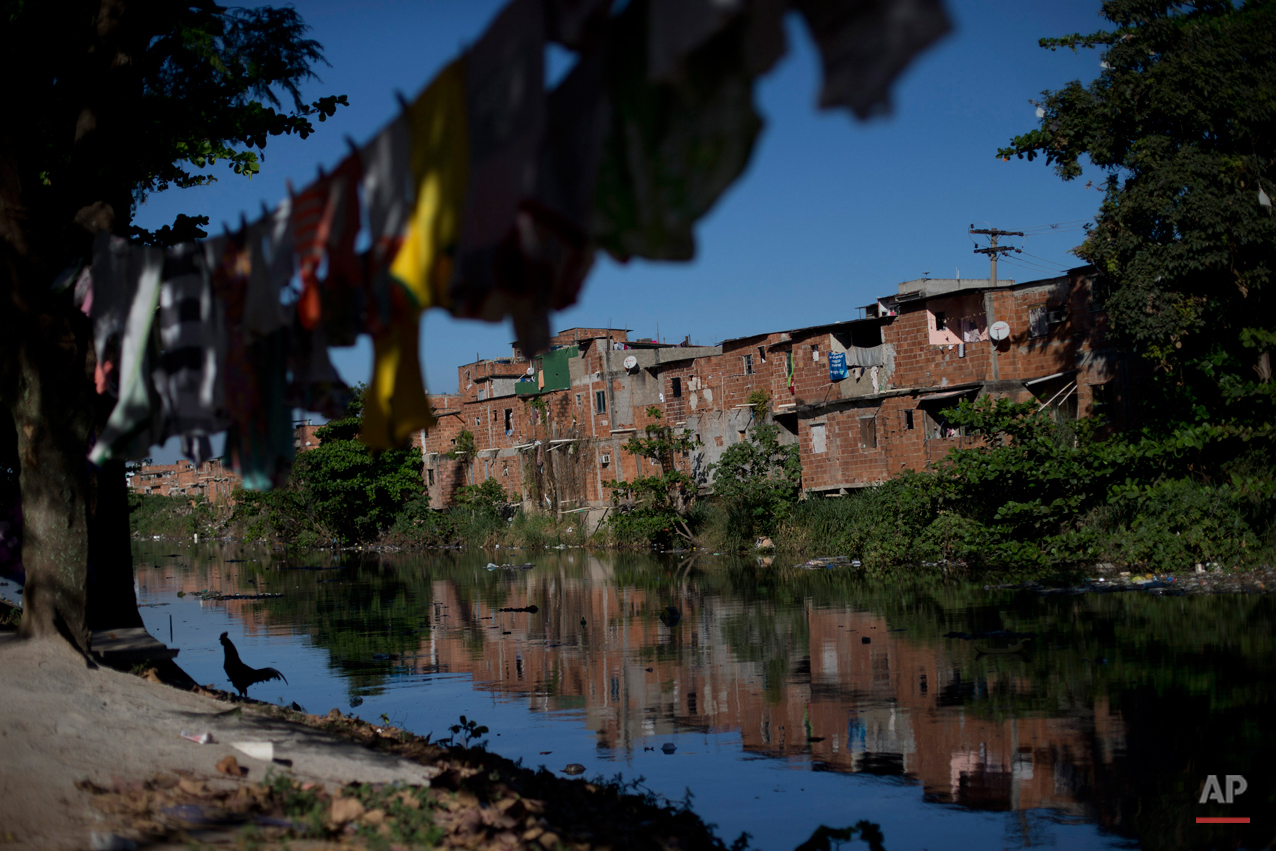
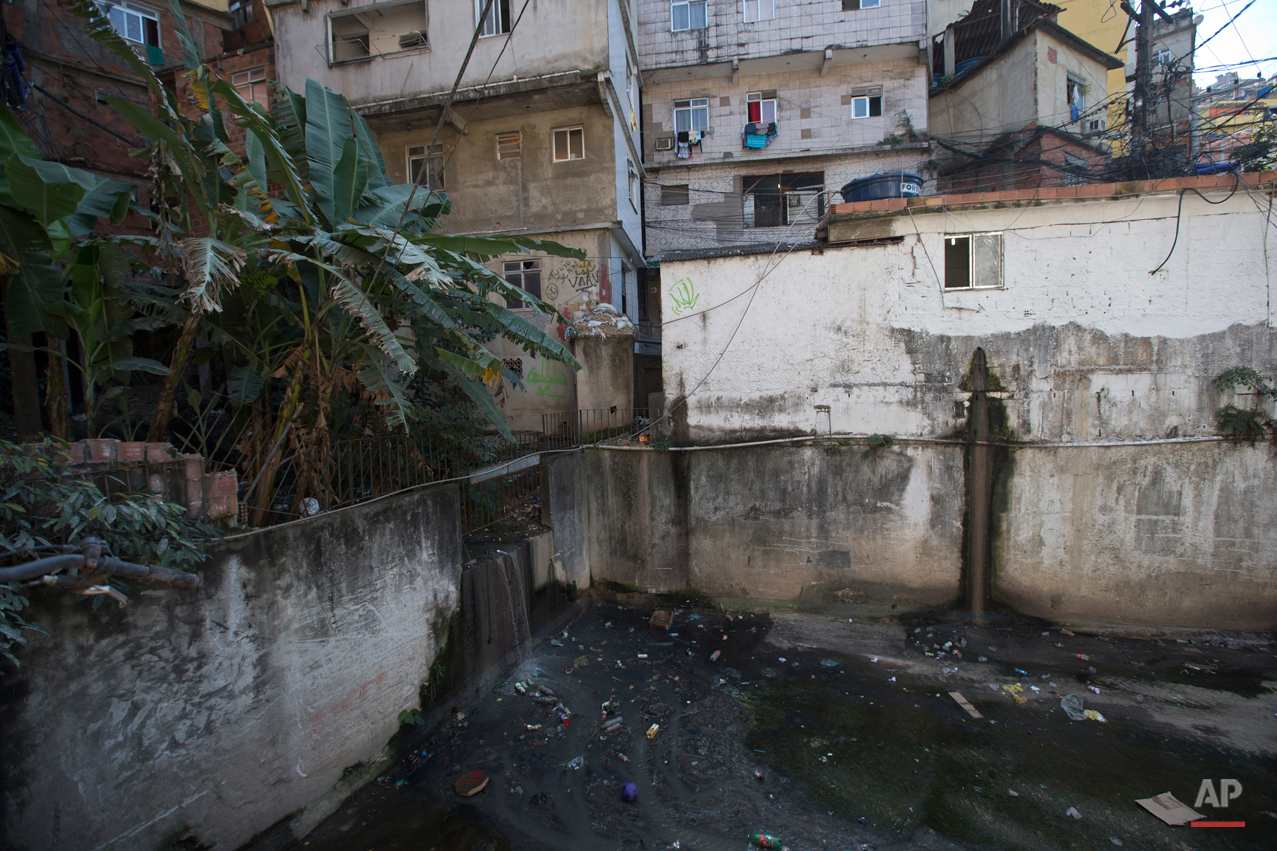
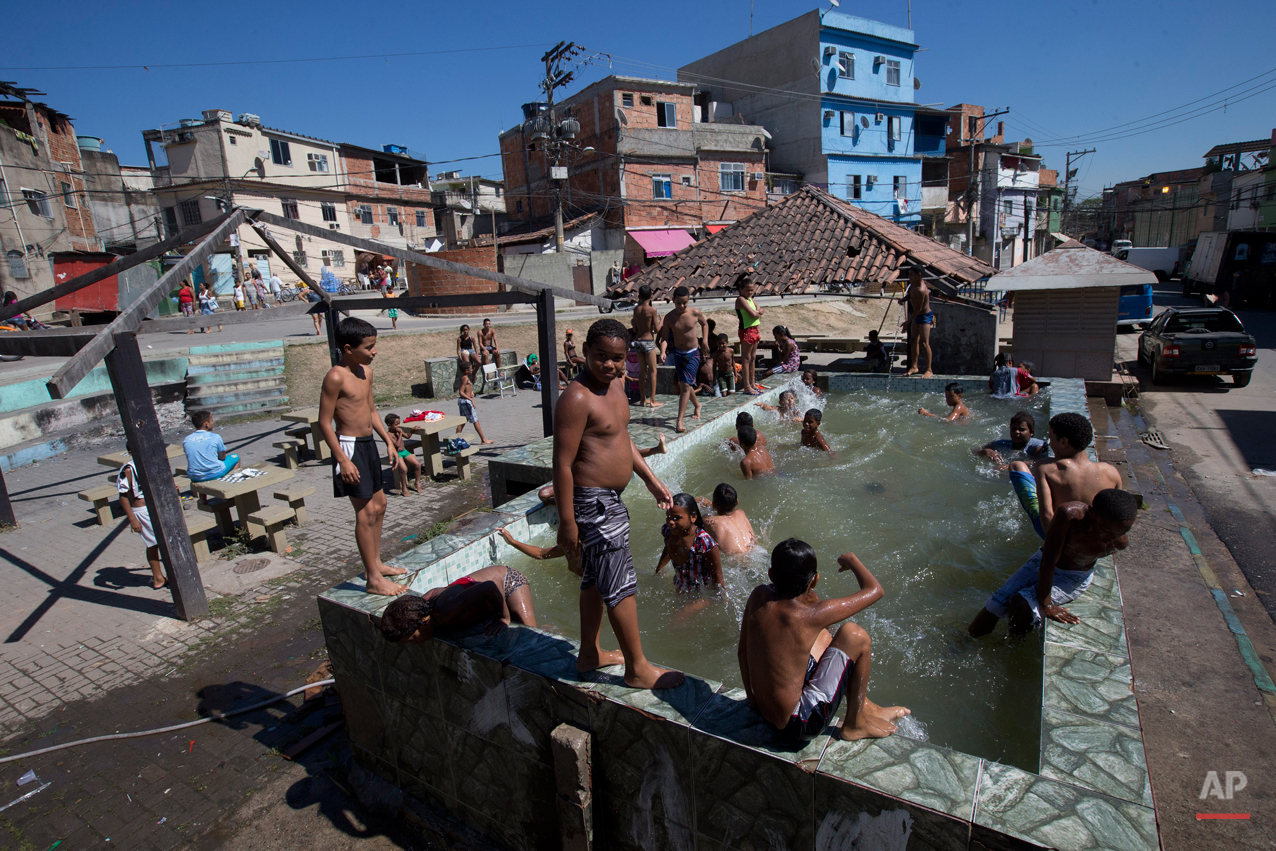
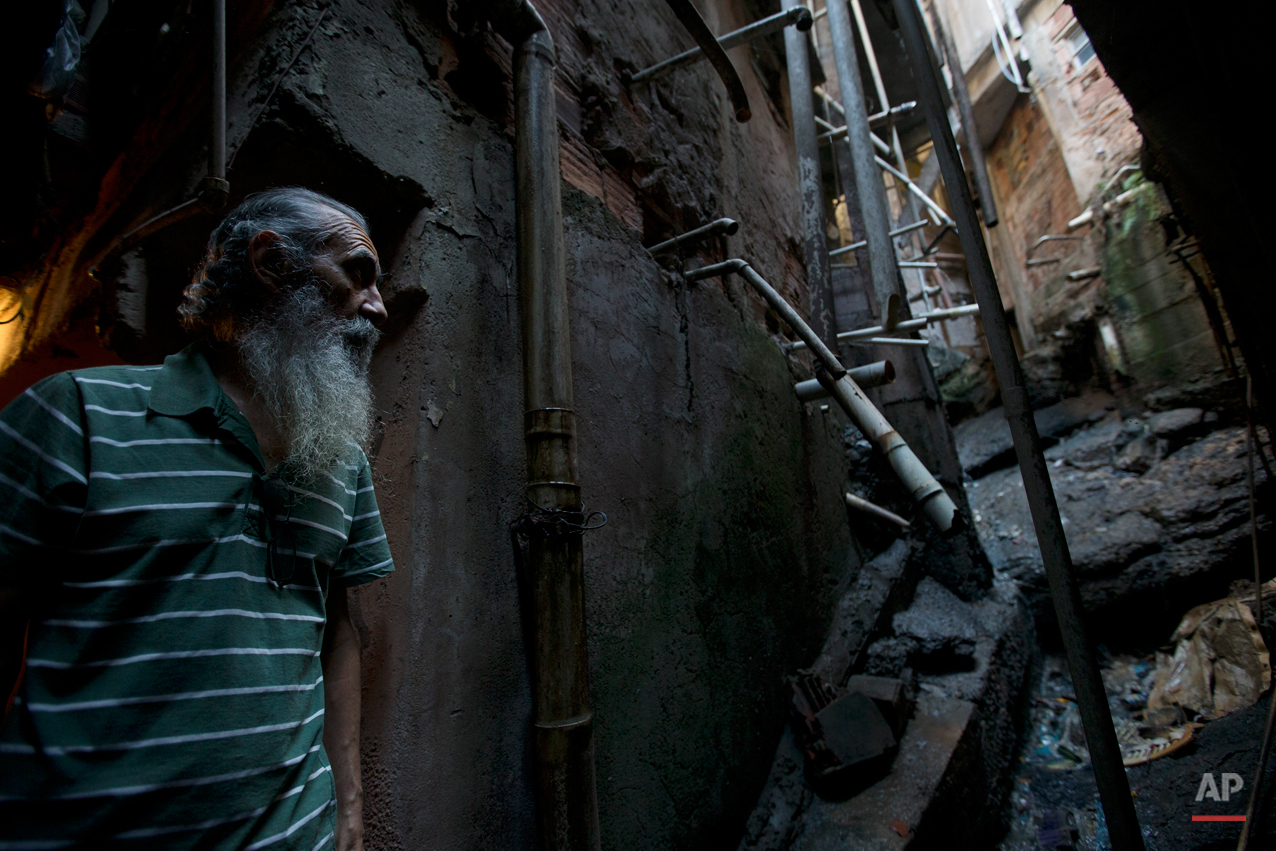


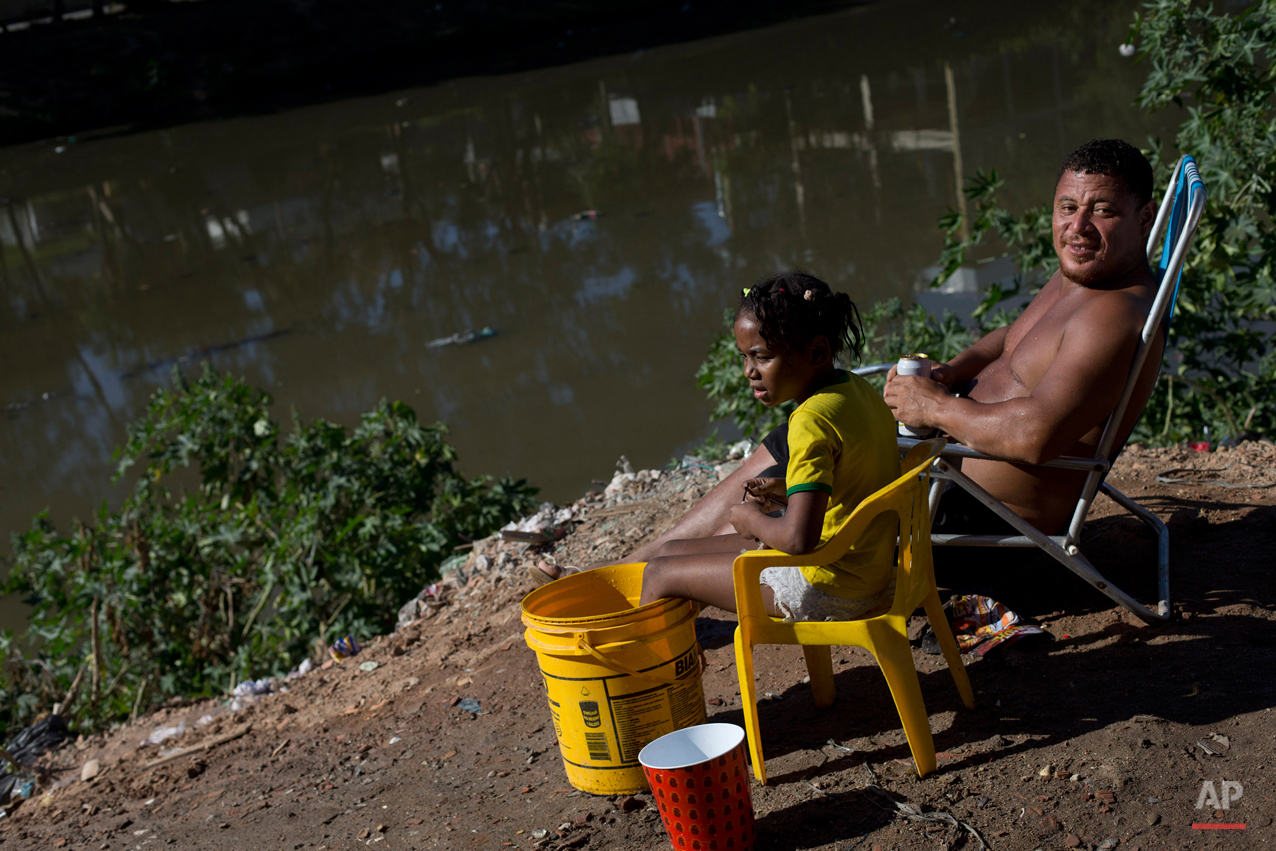
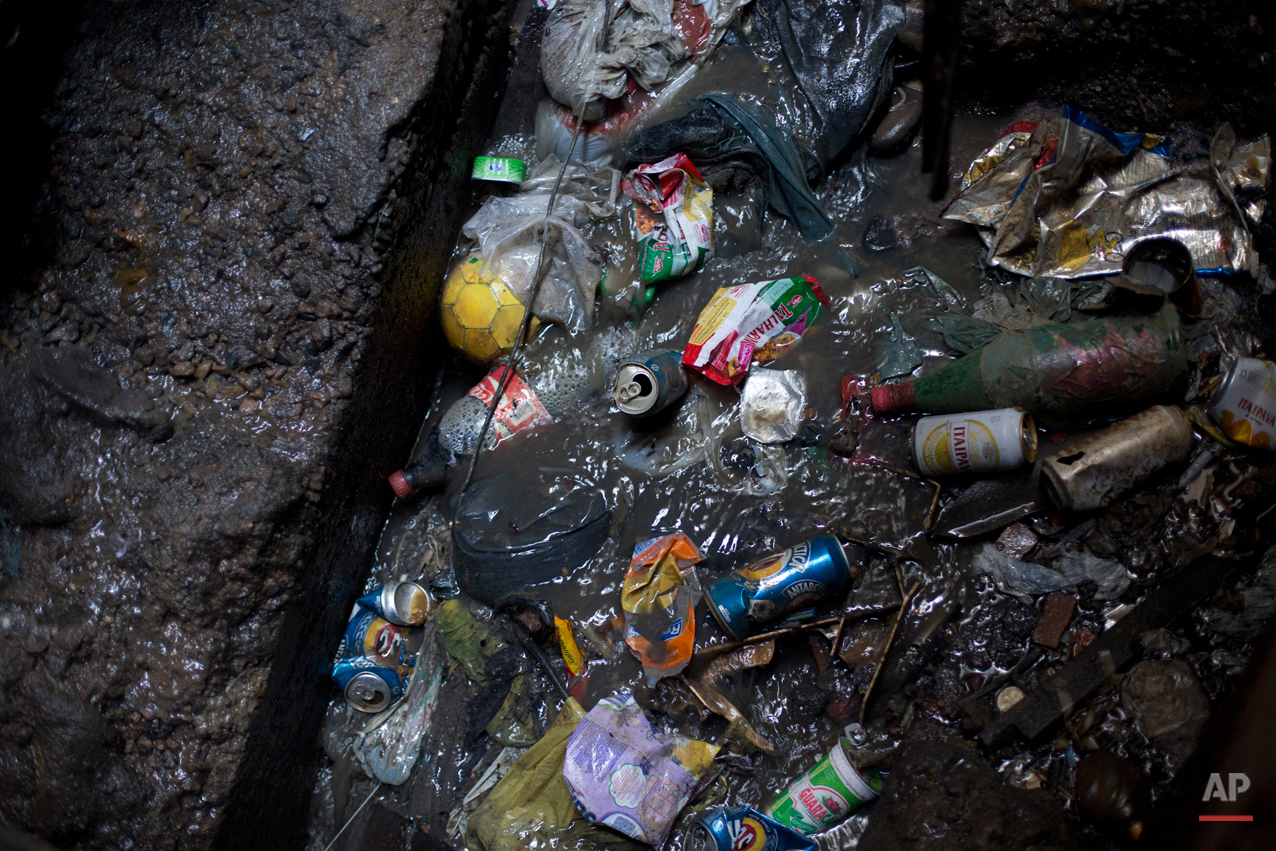
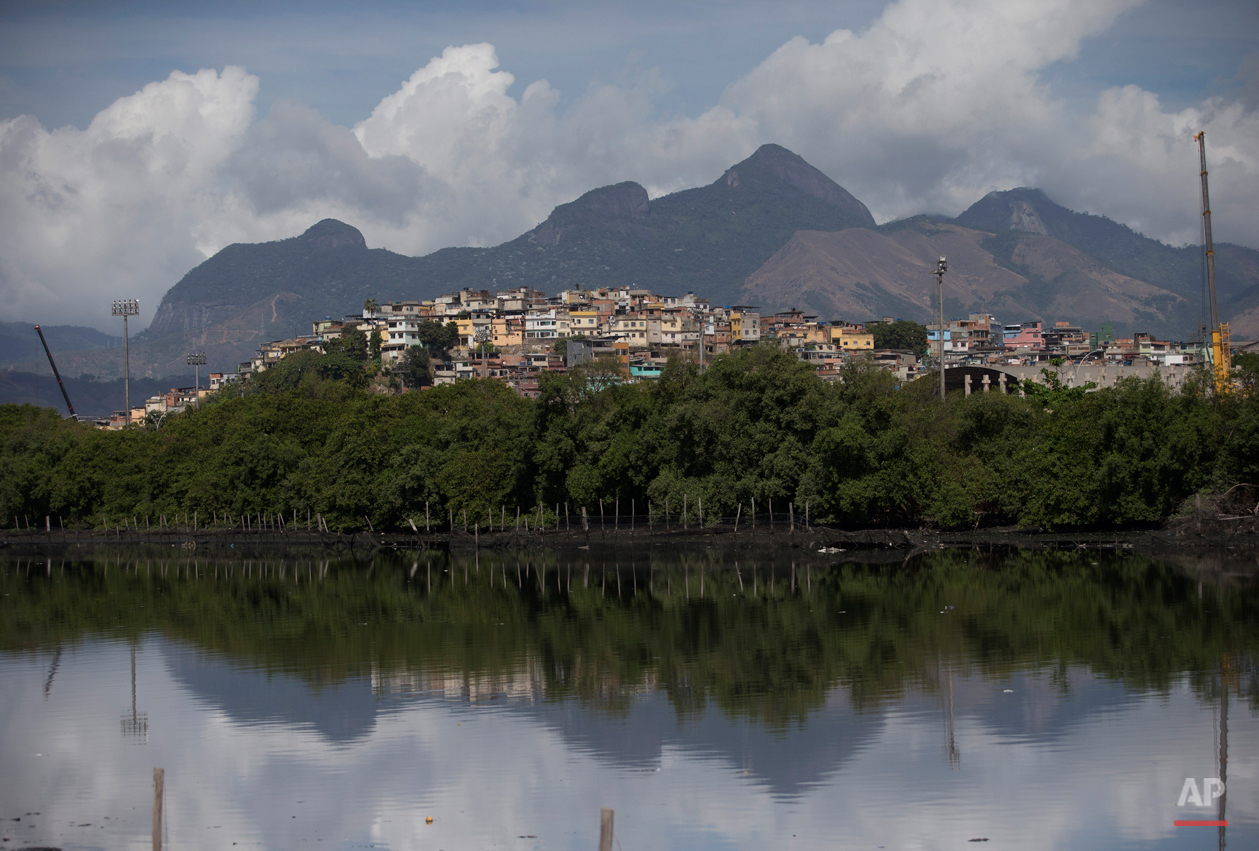






From Kaike's slum — a sprawling hillside warren of concrete and brittle brick dwellings — waste flows directly from white plastic pipes sticking out of shacks and washes downstream, partially draining into the basin that ends up in the Olympic lagoon.
An independent study commissioned by The Associated Press revealed alarmingly high levels of viruses and, sometimes, bacteria from human sewage in all the city's Olympic waterways. A risk assessment based on the AP data found athletes who ingest three teaspoons of water have a 99 percent chance of being infected by a virus, raising alarm among some elite sailors, rowers, canoers, marathon swimmers and triathletes.
For residents of Rocinha and other Rio slums, this is not just a one-time event. They come into contact with such filthy water day after day, week after week, year after year.
Public health experts say children exposed to sewage fall ill more often, are less likely to attend school regularly and fully develop intellectually, and ultimately end up getting significantly lower-paying jobs than people from similar socio-economic backgrounds who grew up with basic sanitation.
Already, Kaike's 18-month-old brother, Rafael, regularly suffers from stomach problems, and last year Kaike was hospitalized for two weeks with acute vomiting and explosive, bloody diarrhea that doctors attributed to a water-borne bacteria or virus.
The boys' mother, Marcele de Oliveira Franca, can't afford to move and so can't protect her children.
"There's no way to avoid it," said Franca, a 21-year-old single mother who cobbles together odd jobs as a maid to make the $86 monthly rent. "Sometimes I think I should get them out of here, but there's no way."
Several general practitioners who work in the public health clinics in Rocinha and other Rio slums estimated that up to 40 percent of all the cases they treat are caused by exposure to sewage. Among their patients, gastroenteritis, hepatitis A and fungal skin infections are the most common.
Young children are the most affected, the doctors said, probably because most people build up antibodies by adolescence.
Not one of the physicians in these government-run clinics would speak on the record, however, for fear of losing their jobs. The issue of sewage has become a hotly contested political issue as it becomes clear that Rio's state and city leaders will not be able to cleanse the waters in time for the Olympics.
A radical cleanup of the city's blighted waterways was meant to be one of the main legacies of the Olympics, used as a key selling point in the city's official bid document. But with less than a year before the games begin and little improvement, authorities have dialed down expectations. Rio Governor Luiz Fernando Pezao recently pushed back the deadline for cleaning Guanabara Bay, where the Olympic sailing competitions are to be staged, from 2016 to 2035.
Fernando Garcia de Freitas has written several reports tracking the health, financial and public policy fallout from Brazil's sewage woes for the pro-sanitation organization Trata Brasil.
"We're talking about nearly 100 million people who are subject, in varying degrees, to this sort of underdevelopment," said Freitas, the expert who called the current sewage system "medieval."
"The effects of our backwardness in sewage treatment goes far beyond the most obvious and easily perceptible one — pollution," Freitas said. Exposure to sewage, he said, "affects people's physiology, it affects their psychological development, harming their intellectual development and then their professional development."
He said his research has found that a child raised without an effective sewage system will go on to earn around 10 percent less than similarly poor kids who at least have sanitation.
Dr. Luiz Joao Abrahao, who heads Rio's gastroenterologists' association, said that Rio's sewage problem has resulted in endemic levels of water-borne illnesses across his city.
"Acute diarrhea is a common thing, something we experience in our day-to-day lives here," said Abrahao, who works at the Fundao Hospital, a top public hospital located on an island in the most heavily polluted area of Guanabara Bay.
Those most affected, Abrahao added, are the poor.
Brazil is the world's seventh-largest economy, but ranked 84th for access to water and sanitation in last year's Yale Environmental Performance Index of 178 countries, trailing such nations such as Turkmenistan, Moldova, Albania, Syria and nearby Chile.
Rapid urban growth in recent decades, poor planning, political infighting and economic instability are largely to blame, experts say.
In Rio, for example, a fiscal crisis that shook Brazil in the 1980s largely froze sewerage investment for two decades, and it took another decade for regulations divvying up responsibility for those investments between the federal, state and municipal governments to make their way through Brazil's notoriously sluggish bureaucracy.
During that time, the metropolitan area's population mushroomed from around 9 million in 1980 to 12 million today, with many of the new residents settling off the grid of basic public services, in the city's more than 1,000 "favela" slums.
Authorities insist they will ensure the safety of the water at the Olympic venues, possibly by using such palliative measures as bioremediation, a waste management technique that uses microscopic organisms to break down contaminants. But experts say the measures planned will do virtually nothing to combat the disease-causing viruses that are rife in the waters.
And the Olympic promises offer little comfort to Rio's slum-dwellers.
About 3,000 of Rio's poorest citizens live in Mandela, a sliver of a slum wedged between two sewage-blackened rivers that flow into nearby Guanabara Bay. Residents are crowded into rough-hewn homes built up to the very edge of the rivers, where clods of waste float sluggishly by. The surface bubbles with escaping gases and a sulphuric stench envelops everything.
Cristiane Candido, a 37-year-old housewife, said her five children were always sick when they were little. Now, it's her grandchildren's turn.
"It's diarrhea, diarrhea, diarrhea all the time," she said.
"Nothing gets better here, nothing," she said. "It just gets worse."
Click on any image below to launch the gallery.
To see the AP's summary findings and methodology of its study on Rio's water quality: http://apne.ws/1IFxS9h
Text from the AP news story, Away from Olympics, Sewage Blights Vast Swaths of Rio, by Jenny Barchfield.
Follow AP photographers and photo editors on Twitter: http://apne.ws/15Oo6jo
Spotlight is the blog of AP Images, the world’s largest collection of historical and contemporary photos. AP Images provides instant access to AP’s iconic photos and adds new content every minute of every day from every corner of the world, making it an essential source of photos and graphics for professional image buyers and commercial customers. Whether your needs are for editorial, commercial, or personal use, AP Images has the content and the expert sales team to fulfill your image requirements. Visit apimages.com to learn more.
Written content on this site is not created by the editorial department of AP, unless otherwise noted.
AP Images on Twitter | AP Images on Facebook | AP Images on Instagram
Visual artist and Journalist





